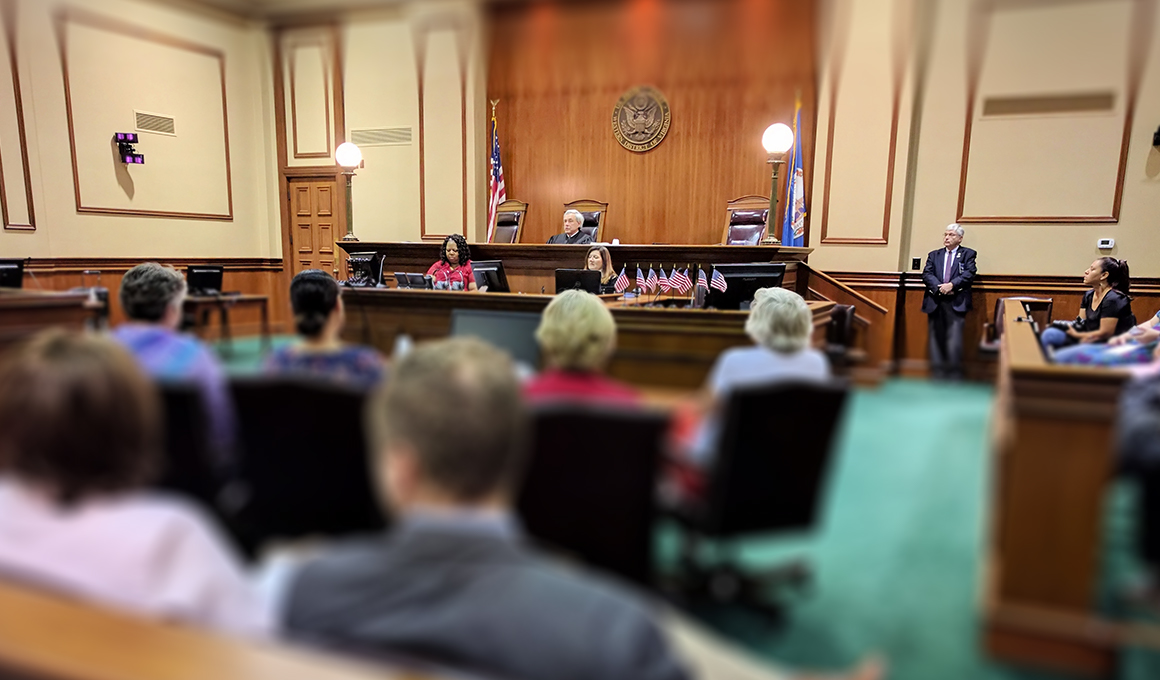Advanced trial presentations make evidence presentation seamless.
How Test Presentations Enhance Your Argument and Persuade Jurors
Trial discussions function as a pivotal system for improving lawful arguments and persuading jurors. By integrating aesthetic help, narrative frameworks, and emotional engagement, attorneys can create a compelling case that reverberates on numerous degrees. The calculated usage of visuals not only clarifies complex details yet additionally catches jurors' interest more effectively than words alone. The art of storytelling plays a just as critical duty in transforming factual proof into an engaging story, shaping jurors' assumptions. Comprehending these elements can significantly influence trial end results, increasing the question of exactly how each component adds to this elaborate dynamic.

Value of Visual Aids
Aesthetic help play an important role in boosting the efficiency of trial discussions, as they can substantially enhance audience involvement and retention of information. In the context of a trial, where jurors are charged with processing facility info, visual aids offer to simplify and clarify bottom lines. Charts, charts, and pictures can convey information and ideas that might or else overwhelm or puzzle jurors, allowing for an extra straightforward understanding of the proof presented.
Additionally, visual aids aid in maintaining juror attention throughout the process. By breaking the dullness of verbal statement, these tools can stress crucial debates, making them much more remarkable. Efficient visual aids can additionally stimulate psychological actions, which can be pivotal in convincing jurors to straighten with the presenter's story.

Crafting Compelling Narratives
An engaging story is vital in test presentations, as it offers as the foundation of effective persuasion. It enables lawyers to weave with each other facts, evidence, and psychological components into a meaningful story that resonates with jurors. This narrative framework makes it possible for jurors to understand the complexities of the instance while guiding them through the lawyer's debate.
To craft a compelling narrative, attorneys ought to focus on clarity and coherence. Additionally, the use of vivid descriptions can develop psychological photos that aid jurors picture the occasions, making the narrative much more memorable.
Moreover, integrating vital motifs throughout the discussion strengthens the core message and aids in retention - trial presentations. The narrative ought to not only share details yet additionally evoke a sense of justice, highlighting the stakes involved. Inevitably, a sound narrative fosters a connection in between the jurors and the instance, positioning the attorney's debate as both reputable and engaging, therefore boosting the possibility of a beneficial verdict

Engaging the Court Mentally
Effective court interaction depends upon the attorney's capacity to link with jurors on an emotional degree. This connection can dramatically influence jurors' perceptions and their best decision-making. Using sob stories permits attorneys to humanize the situation, transforming abstract lawful concepts right into relatable experiences. By providing real-life tales or testimonies, lawyers can evoke compassion and compassion, promoting a much deeper understanding of the issues at risk.
Aesthetic aids, such as photos or video clips, can even more enhance psychological engagement, offering jurors with dazzling representations of the instance's human aspects. Crafting a narrative that highlights the struggles and accomplishments of the people involved makes certain that jurors see beyond the lawful arguments and identify the human effects of their decisions.
An attorney's passionate shipment can reverberate with jurors, enhancing their psychological financial investment in the instance. It's crucial to stabilize psychological charms with accurate evidence, guaranteeing that jurors feel obliged to act while staying grounded in the truth.
Structuring Your Presentation

The body of the discussion ought to be practically fractional into vital points, each supported by engaging proof. It is advantageous to make use of storytelling techniques to weave realities into a story that jurors can easily comply with. Visual help, such as charts and video clips, can improve understanding and interaction, helping to highlight important pieces of proof.
Real-World Case Research Studies
Examining real-world situation studies supplies vital understandings right into the art of test presentations and persuasion. For circumstances, the site case of "O.J. Simpson v. Individuals of California" illustrates just how visual help and engaging narratives can persuade jury perceptions. The defense group efficiently employed a strategy that combined prominent professional testaments with multimedia presentations, which captivated Get the facts jurors and inevitably influenced their decision.
Another noteworthy example is the "McDonald's Coffee Case," where the plaintiff's attorneys utilized graphic images of the injuries suffered by Stella Liebeck. trial presentations. This plain visual evidence Check This Out played a vital duty in sharing the extent of her burns, bring about a significant court honor. Such instances show that impactful trial presentations typically depend upon the effective integration of visuals and storytelling to stimulate psychological feedbacks from jurors
Furthermore, the "Casey Anthony Test" highlighted the relevance of narrative comprehensibility and reputation. The prosecution's failing to develop a compelling timeline diminished their persuasive power, emphasizing the need of a well-structured discussion. Evaluating these cases discloses that effective trial presentations call for calculated planning, psychological interaction, and the capability to resonate with jurors' worths and beliefs.
Conclusion
Test presentations significantly enhance debates and convince jurors through the critical use visual help, compelling narratives, and psychological engagement. By streamlining complicated information and promoting connections with the target market, these aspects create an unforgettable and impactful experience. A well-structured presentation equilibriums emotional appeals with accurate evidence, inevitably resonating with jurors' worths. The integration of these techniques his response not just influences decision-making yet likewise emphasizes the value of effective interaction in the courtroom.